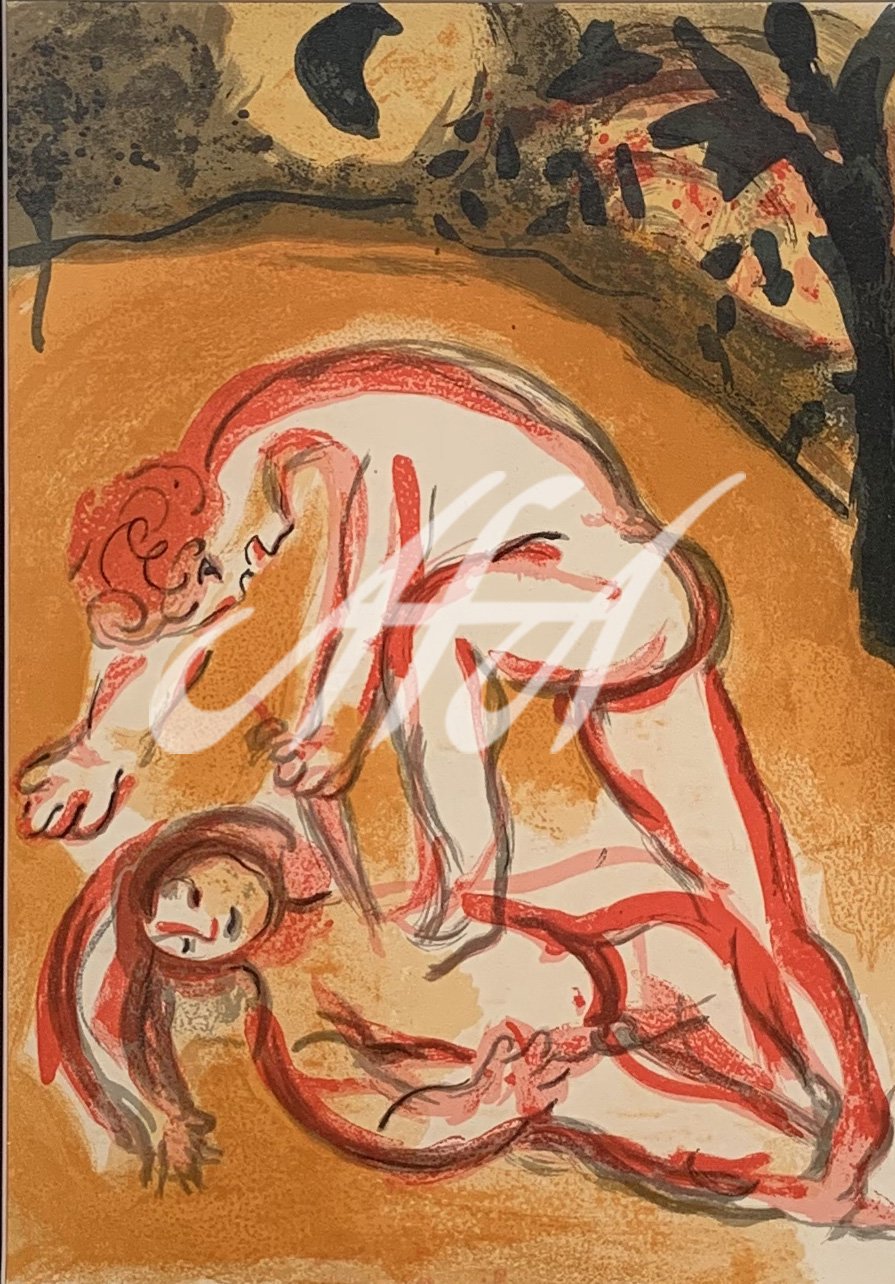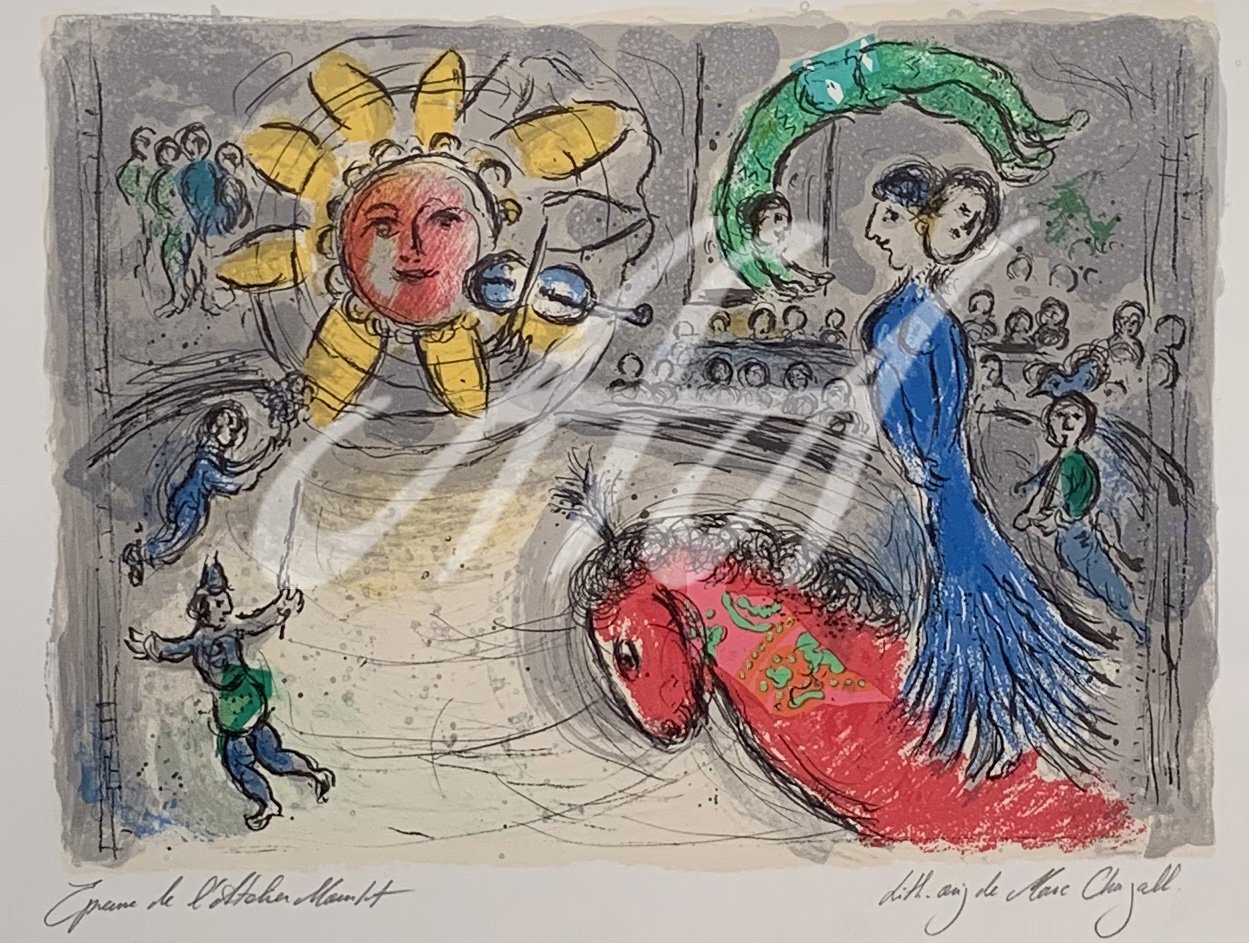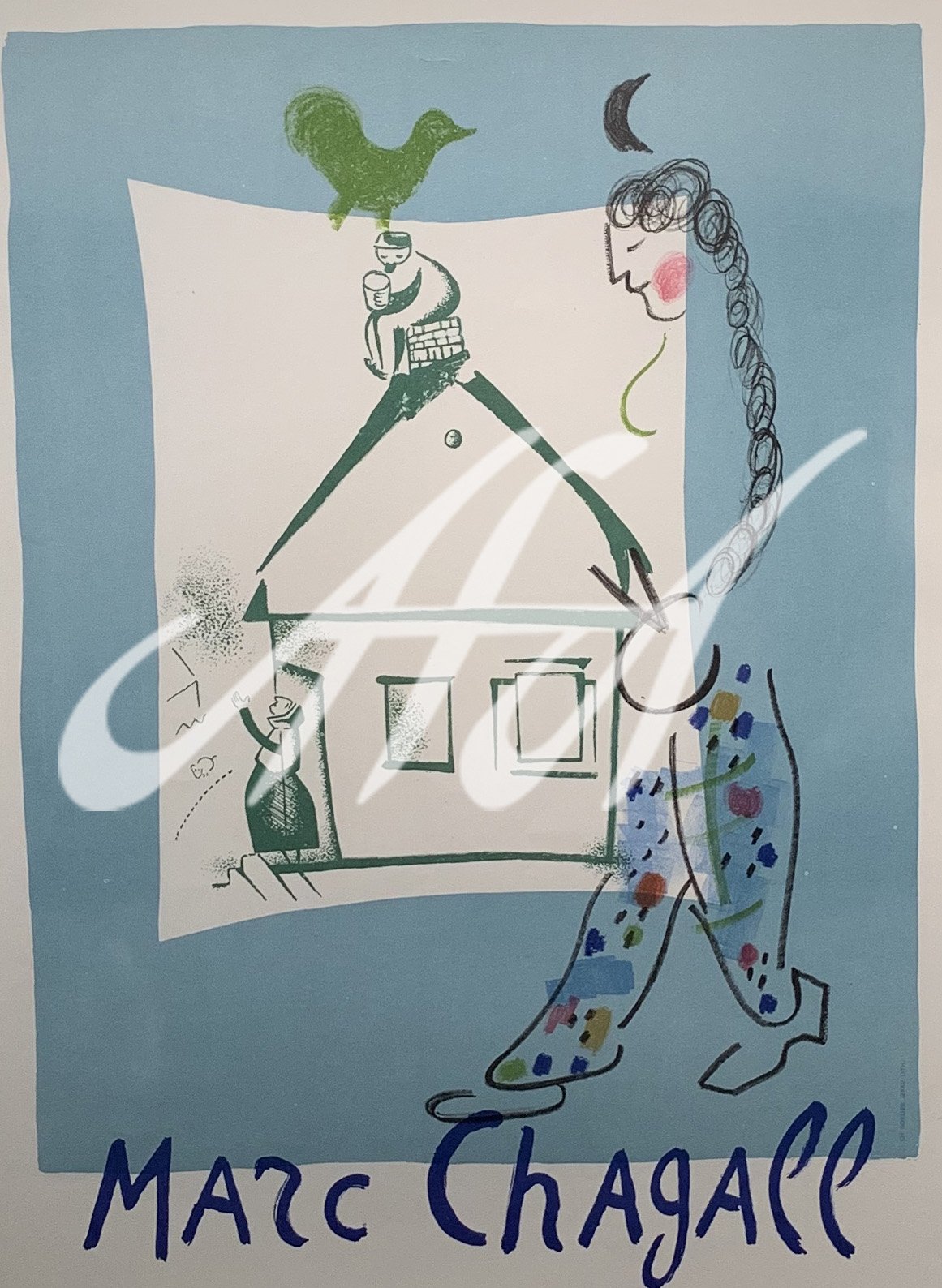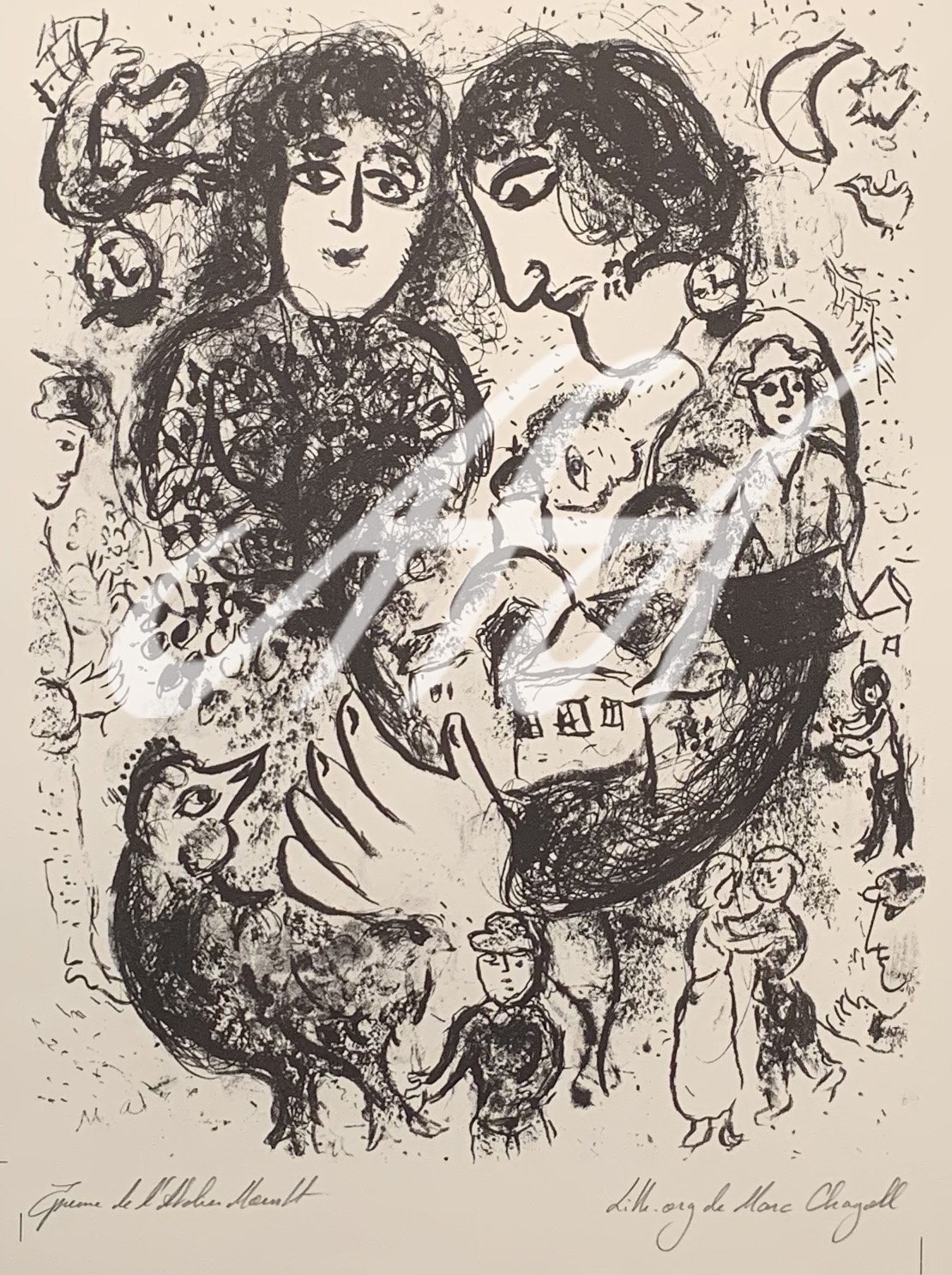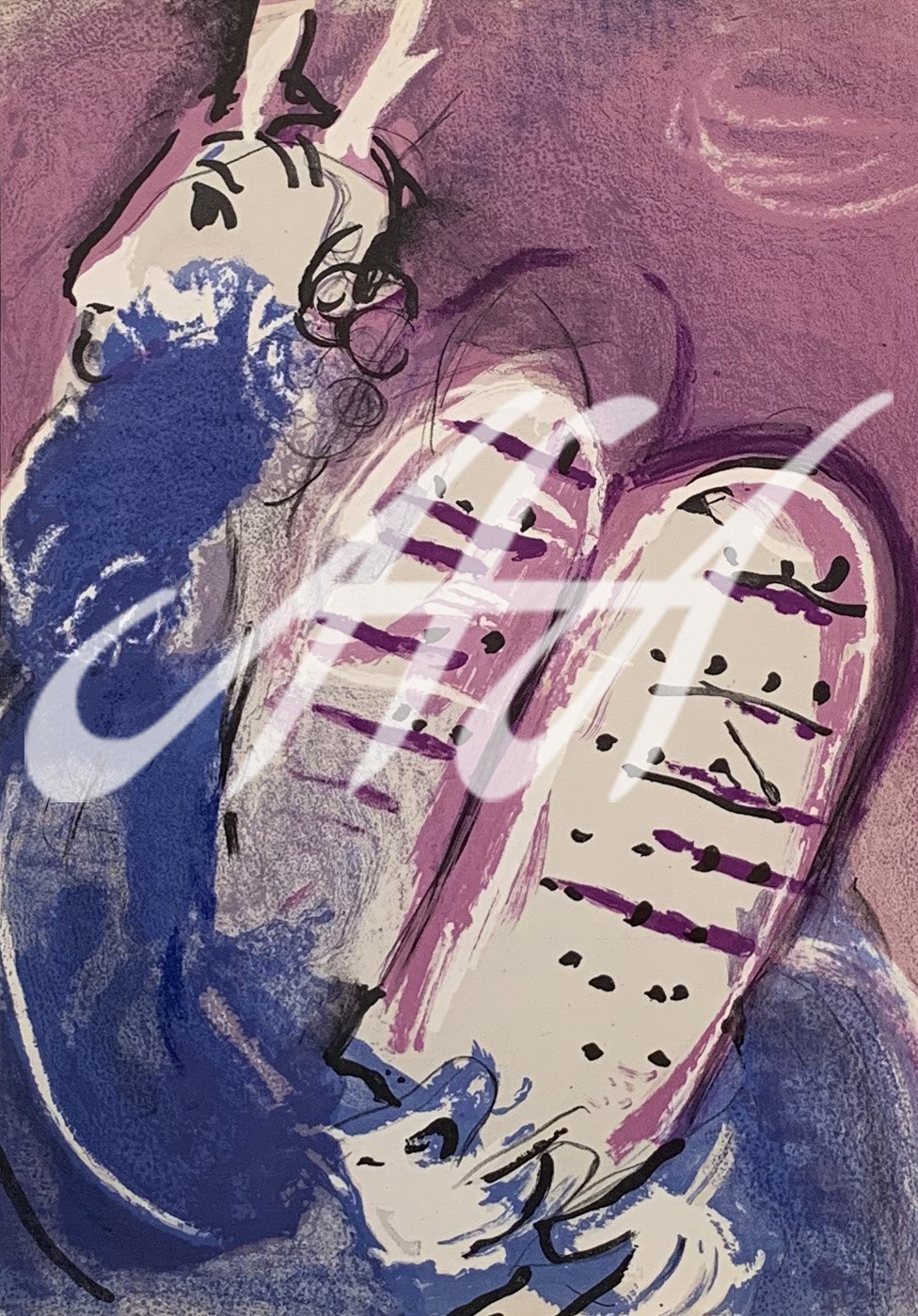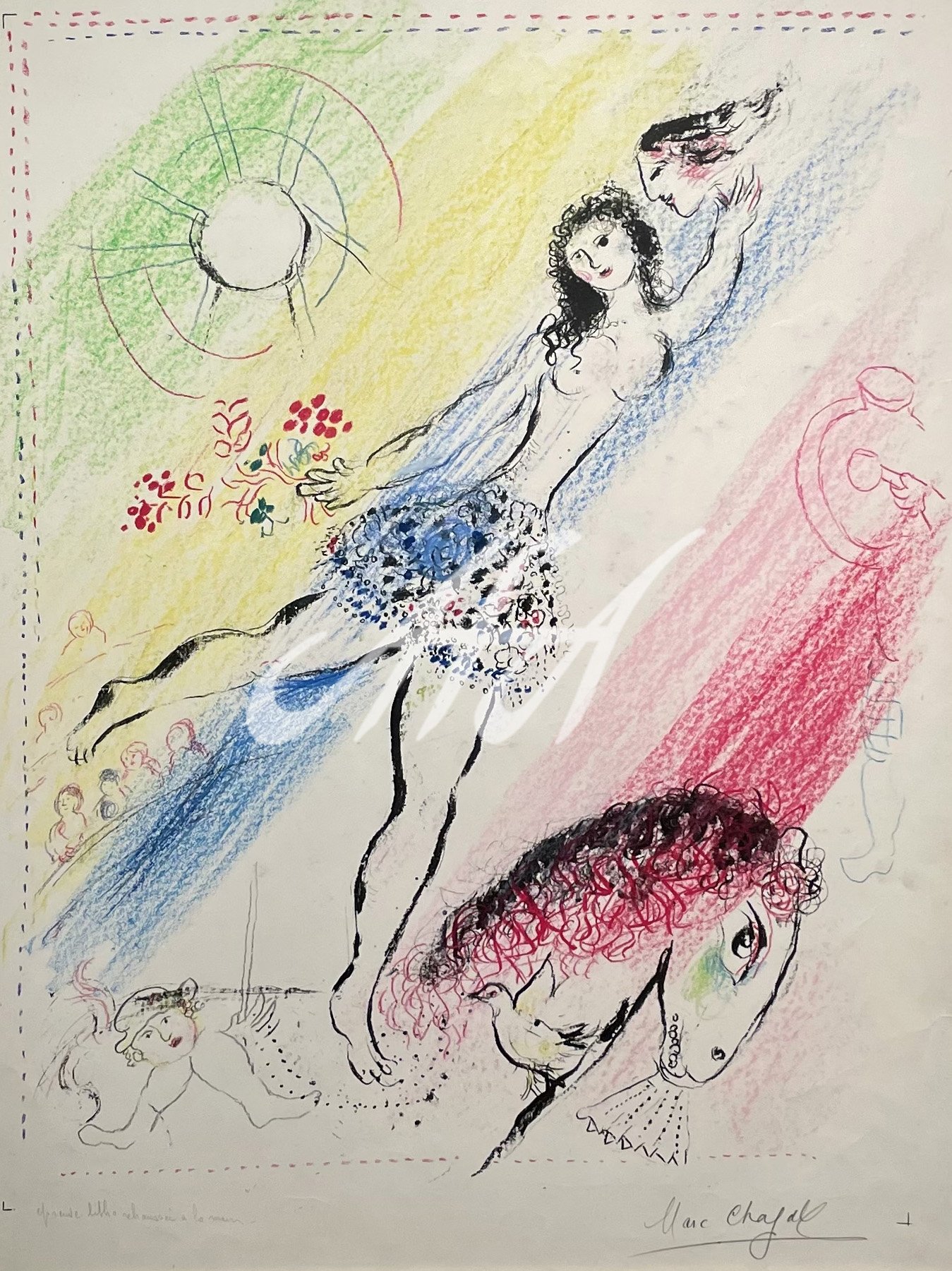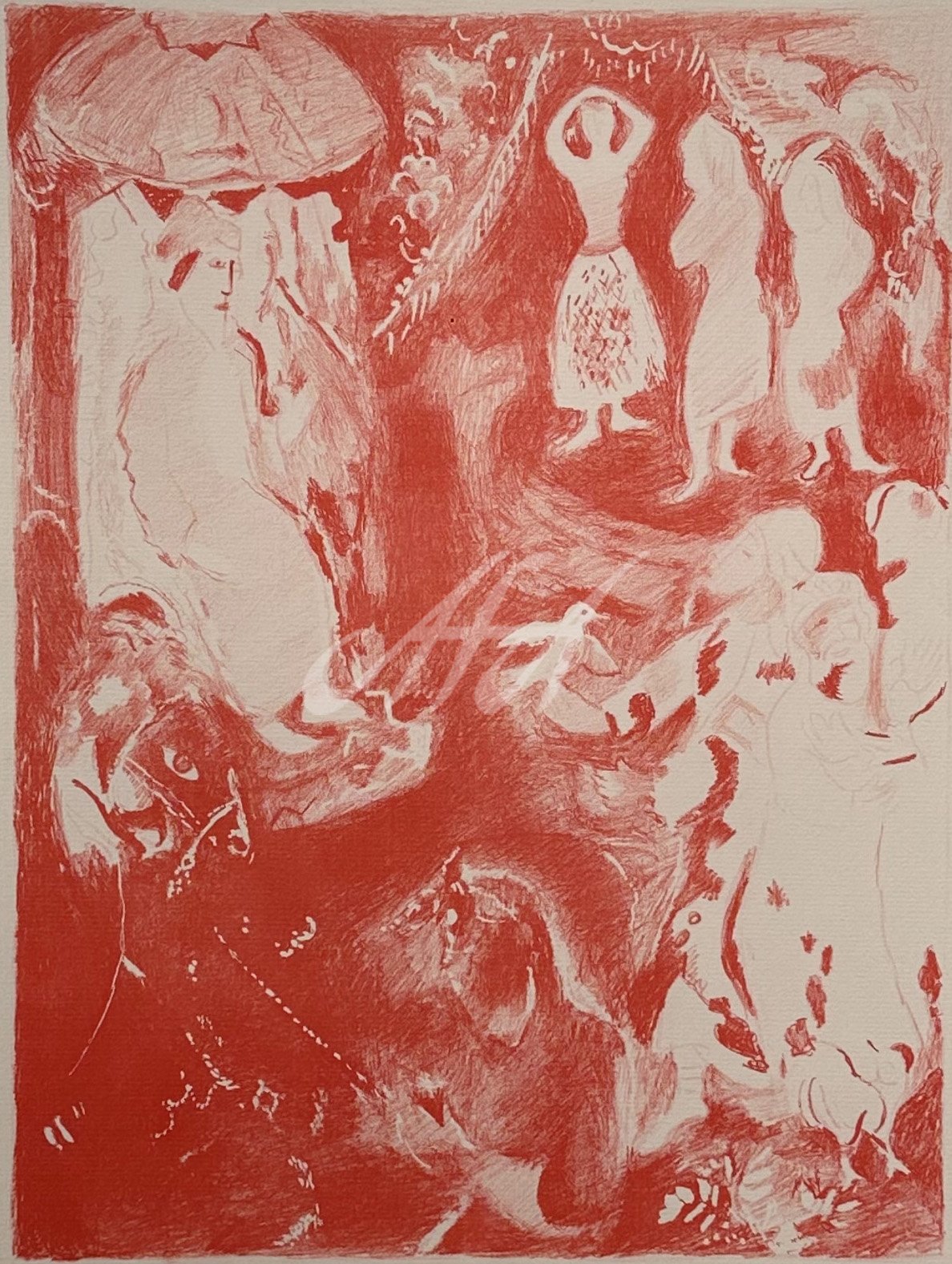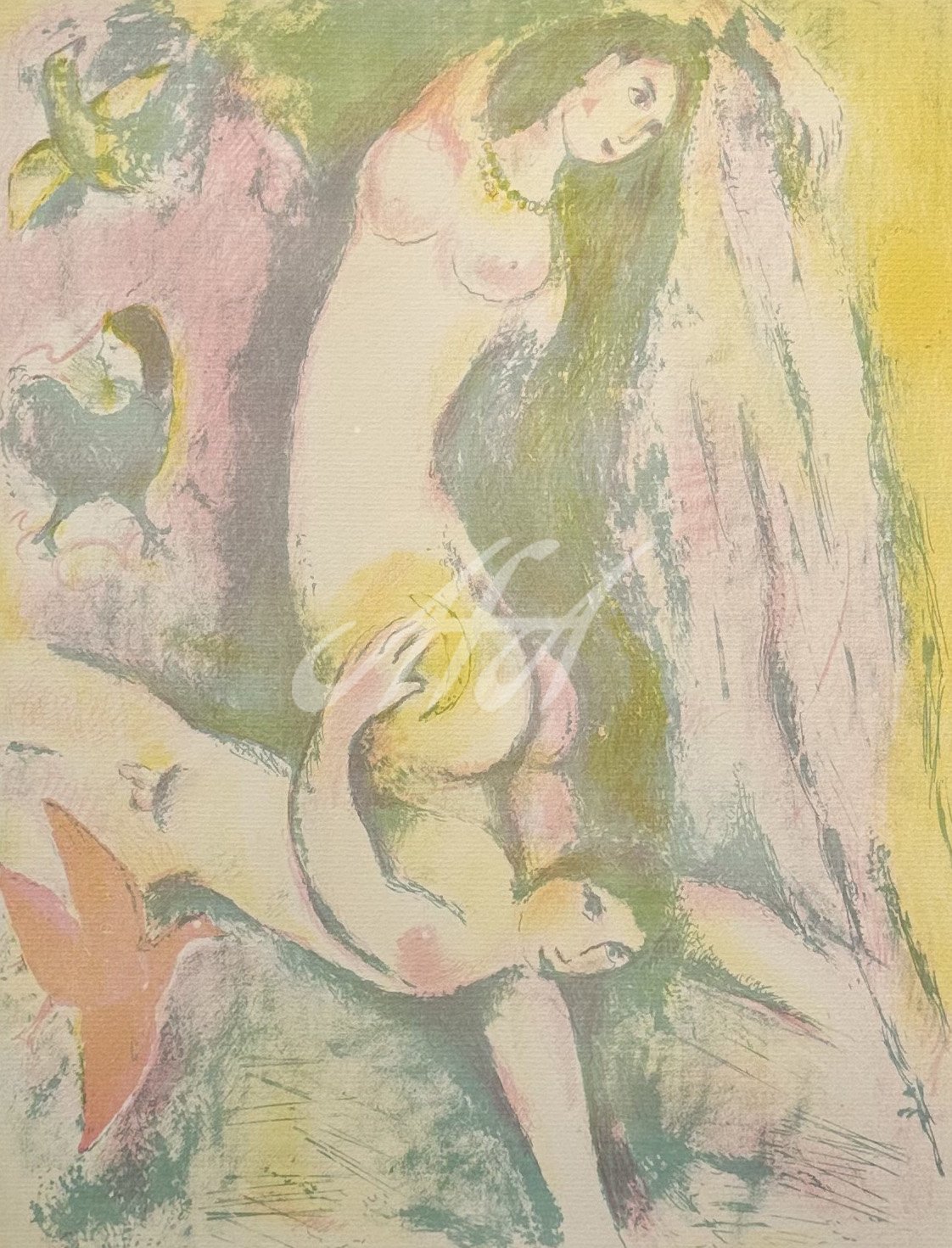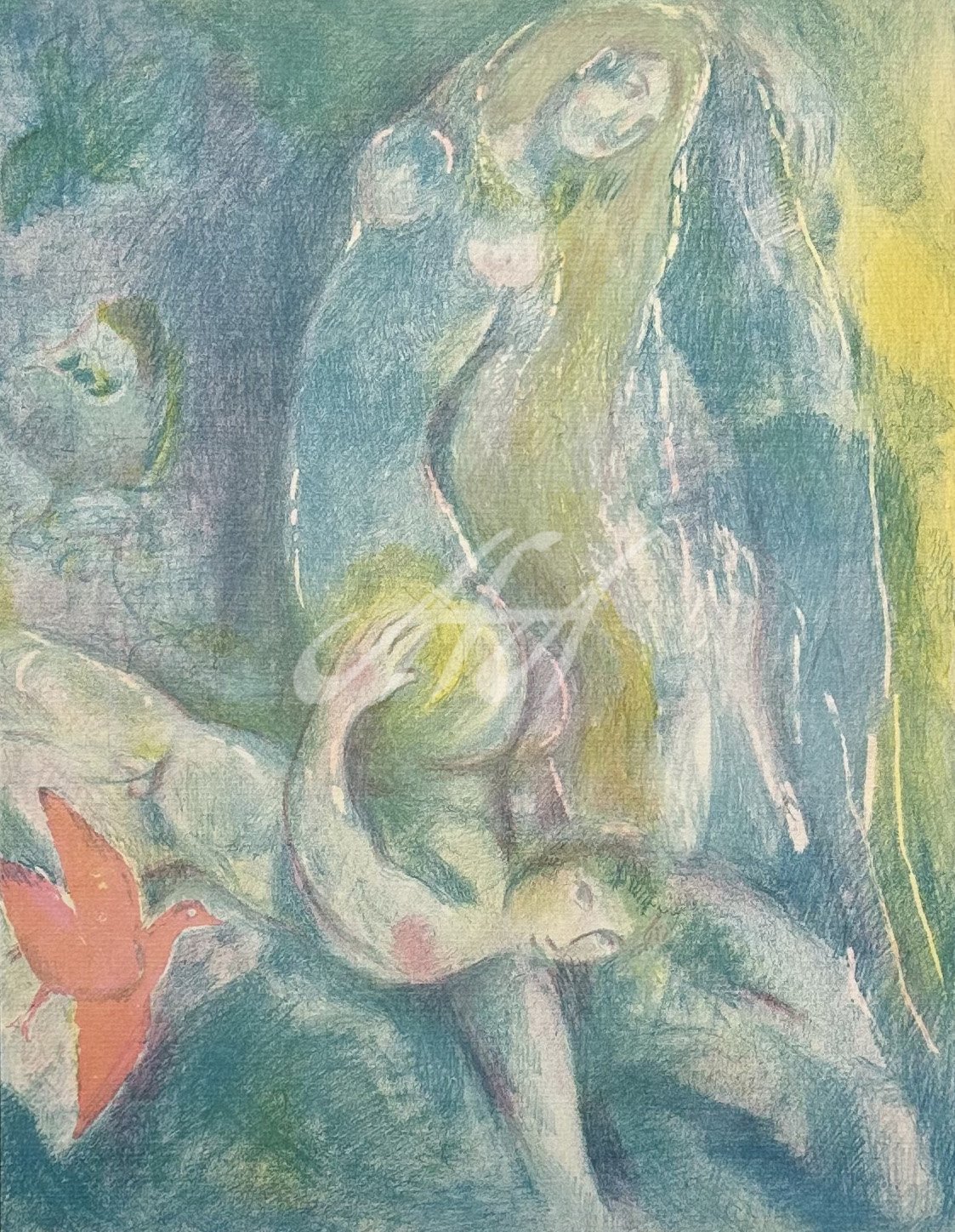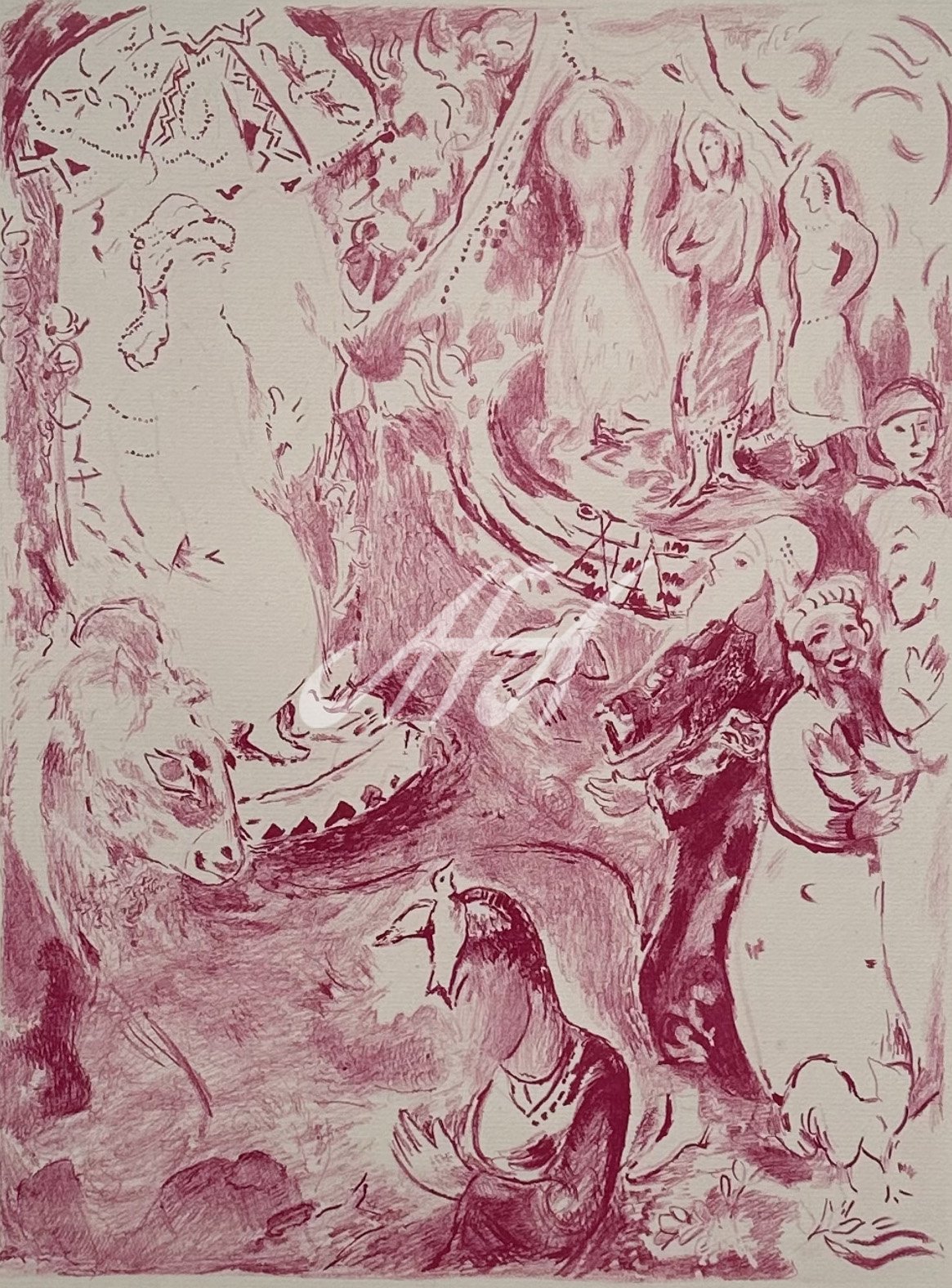Marc Chagall
(Russian, 1887 – 1985)
“If I create from the heart, nearly everything works. If from the head, almost nothing.”
— Marc Chagall
In an age of constant change, Marc Chagall's single vision was a breath of fresh air. For all of the styles and movements that the art world witnessed during the 20th century, rarely did a single artist defy comparison, fit no mold, and standalone like Marc Chagall. Almost every work of art created by the hand of Chagall reads like poetry. Each element infused into his paintings complements one another to create harmonious, lyrical, and balanced compositions. He worked in practically every medium; he made paintings, illustrations, etchings, glasswork, ceramics, tapestries, and more. Chagall’s artworks, regardless of the media, are filled with the everlasting essence of life. He was both a pioneer of modern art and a major figure in Jewish art, and has been described as “the quintessential Jewish artist of the 20th century.”
Marc Chagall was born Moishe Segal in the summer of 1887 to a poor Jewish family in Vitebsk, a small, humble village in Belarus where May Laws once forbade Jews from doing many things. His father worked in a herring house, and his mother sold groceries like fish, sugar, and spices from home. The eldest of nine children, he studied first at the local Jewish religious school before moving to a secular Russian school, where he began to display artistic talent. When young Chagall, completely unaware of the concept, witnessed a classmate drawing, he began to copy images from library books, thus igniting his desire to be an artist. With his mother's support, and despite his father's disapproval, Chagall moved to St. Petersburg at age 20, as the Russian Empire’s capital held many famous art schools. With a temporary passport from a friend, Chagall enrolled at a prestigious art school, where he studied for two years before becoming a student of Léon Bakst at the Zvantseva School of Drawing and Painting. Chagall met Bella Rosenfeld around this time, whom he would eventually marry and would become his muse and reference for many painted works. His time in St. Petersburg established him as a mainstream, contemporary artist, and by 1910, Chagall moved to Paris to further develop his artistic style. It was in Paris that Chagall witnessed the ideas, techniques, and approaches to various schools of art including Cubism, Fauvism, and Surrealism. He studied at Académie de La Palette and spent free time visiting the plethora of Parisian galleries, salons, and museums including the Louvre. Chagall’s works during this time displayed a combination of Jewish motifs and Parisian scenery as he developed his own symbolic language that would become a formative influence on movements like Surrealism.
Chagall accepted an invitation to exhibit his work in Berlin in 1914 with the intention to travel back to his hometown to reunite with Bella, get married, and return to Paris with her. He took over 40 canvases and 160 gouaches, watercolors, and drawings to the Sturm Gallery, and the show was a huge success among German critics. A few weeks after his return to Russia, World War I broke out, trapping him in the New Soviet Union. A year later, Chagall and Bella were married and they had their first child, Ida. Chagall began exhibiting works among the avant-garde artists in Moscow and St. Petersburg by 1915, providing him with plenty of exposure and income. Chagall prospered and took a position as Commissar of Arts for his village of Vitebsk in 1917, resulting in him founding the Vitebsk Arts College. However, disagreements with other artists led him to Moscow after resigning from his position, where he began working as a stage designer for the new State Jewish Chamber Theater. Discomforted by the primitive living conditions caused by the First World War and Russian Civil War, Chagall, his wife Bella, and daughter Ida finally returned to France in 1923. Chagall would complete his autobiography titled My Life around this time. After forming a business relationship with French art dealer Ambroise Vollard, Chagall was commissioned to illustrate a series of books including Gogol’s Dead Souls, the Bible, and La Fontaine’s Fables, which would later be described as some of his finest printed works. In 1926, the Reinhardt Gallery in New York held Chagall’s first American exhibition, featuring about 100 works. The next few years were filled with travel, which Chagall described as advantageous for him in an artistic sense, such as his two-month visit to Israel. To immerse himself into the history of the Jews at the Holy Land helped Chagall find “a part of his own being” that would influence religious symbolism in his art. In 1937, Chagall became a French citizen, a privilege that was soon revoked when the Germans conquered France in 1941. Chagall, like many, was hesitant to accept the danger he faced as a Jewish person, and as an artist, he was among those condemned a “degenerate” by Hitler. In April of 1941, Chagall was arrested until American intervention narrowly secured his release and escape.
Chagall spent the WWII years in America, where he was surprised to discover that he had already reached international stature. The artist felt at home in the Jewish neighborhoods of the Lower East Side of New York. While contemporary artists didn’t yet fully understand Chagall’s work, he began exhibiting in galleries across New York and Chicago with the help of art dealer Pierre Matisse, son of Henri Matisse. In 1942, Chagall was commissioned to design sets and costumes for the Ballet Theatre of New York’s performance of Aleko. Chagall stopped working for several months following the death of his wife, Bella, in 1944 due to an untreated viral infection. The artist developed a new relationship with an Englishwoman named Virginia Haggard, and together they had a son, David, in 1946. That same year, the Museum of Modern Art in New York held an exhibit of over 40 years worth of Chagall’s work, giving visitors a complete impression of the progression of his art for the first time. Following the end of the war, Chagall returned to France for good in autumn of 1947. Haggard left him in April of 1952, and he would marry Valentina Brodsky by July of that year, with whom he would spend the rest of his life. Chagall explored several mediums after his return to France, producing numerous sculptures, ceramics, murals, stained glass windows, and tapestries. At 77 years old, Chagall spent a year painting the new ceiling for the Paris Opera, which was presented to the public in September of 1964 and widely accepted as a great contribution to French culture. Chagall’s final work was a commissioned piece for the Rehabilitation Institute of Chicago, though he died before completing the tapestry on March 28, 1985 at the age of 97.
Chagall is revered as a pioneer of modernism as well and a major Jewish artist of the 20th century. Overall, he reimagined his own cultural experiences through his paintings in a way that had not been done before. The artist received several honors throughout his lifetime that highlighted his contributions to art. In 1960, Brandeis University awarded him an honorary degree in Laws at its 9th Commencement. He officially became a member of the Royal Academy of Science, Letters, and Fine Arts of Belgium in 1974. The city of Jerusalem awarded Chagall with the Yakir Yerushalayim (Worthy Citizen of Jerusalem) award in 1977, and that same year, he was awarded with France’s highest honor, the Grand-Croix de la Legion d’honneur. Other tributes that honor Chagall’s life include the documentary film Chagall released in 1963, which won the Academy Award for Best Short Subject Documentary the following year. Several nations have produced postage stamps featuring Chagall’s works. In 1963, France issued a stamp with the image of Chagall’s The Married Couple of the Eiffel Tower, and in 1969, Israel did the same with his King David painting. Four years later, Israel created a 12-stamp collection that featured images of his stained glass windows for the Hadassah Hebrew University Medical Center Synagogue.
Countless exhibitions filled Chagall’s career and continue to share his greatness with the world posthumously. In 1967, the Louvre in Paris showed over 17 large-scale paintings and 38 gouaches of Chagall’s, which were later donated to the nation of France. These works are now held at the Marc Chagall National Museum in Nice, which was inaugurated on July 7, 1973, Chagall’s birthday. Grand Palais in Paris held Chagall’s largest exhibition to date during 1969 to 1970, including about 474 works. The artist’s childhood home in Vitebsk, Belarus was refurbished into the Marc Chagall House Museum and opened to the public in 1997. Decades following his passing, the Jewish Museum in New York City continues to honor Chagall’s work, having held exhibits in both 2001 and 2013. Other notable exhibits have taken place all over the world, including at: Moderna Museet in Stockholm, Royal Academy in London, Dynamic Museum in Senegal, San Francisco Museum of Modern Art, and II Complesso del Vittoriano in Rome. In addition to his incredible oeuvre of paintings, Chagall’s murals, stained glass works, tapestries, and sculptures are permanently and publicly displayed to this day, reminding the world of the artistic contributions of Marc Chagall as a Jewish modernist master.
American Fine Art, Inc. is proud to feature the original works and limited editions of Marc Chagall. Visit our 12,000 sq. ft. showroom in Scottsdale, Arizona or call today. Our website is offered only as a limited place to browse or refresh your memory and is not a reflection of our current inventory. To learn more about collecting, pricing, value, or any other art information, please contact one of our International Art Consultants. We look forward to giving you the one on one attention you deserve when building your fine art collection. We hope you find our website helpful and look forward to seeing you in Scottsdale soon.








